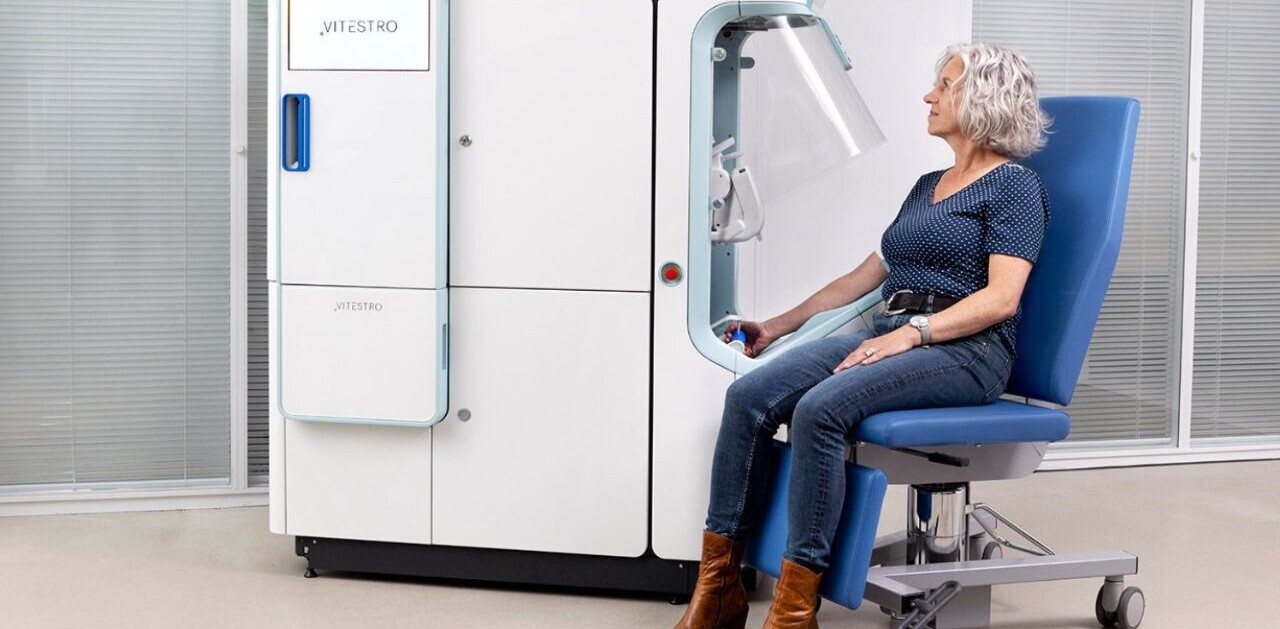2020 has been quite a year. Almost every industry and aspect of how we work, learn, and communicate was turned upside down. The need for fast tech solutions has brought about new trends and changes on a scale we’ve never seen before.
It’s agile, fast-moving tech startups that have been leading the way by developing new solutions and features to help us adjust to this new reality. But, as different parts of the world begin opening up again, which trends will stick? How will these experiences change and shape our lives for the better?
This year Techleap.nl kicked off its Rise program for up-and-coming Dutch scaleups, with the aim to help them continue maturing into the country’s next success stories.
We caught up with five entrepreneurs from the program’s first batch of cohorts to find out what new trends emerged in their industry and how they’ve used tech to navigate new challenges.
1. Office analytics will help businesses organize a safe return to the workplace
This year, our work lives took a strange and sudden turn. We went from spending the majority of our time at work to working from home.
Now that businesses in some parts of the world are opening up again, the question is how can we make the return to the office safe? And should we actually go back to the all-hands in-office model?
“What we see is that technology is really a key enabler for this modern workplace. If you want more social distance, you need more office space per employee. This means you need to redesign workspaces and meeting rooms, but you also need a way to organize who’s going to be in the office at different times. Tech can help you with this,” said Sander Schutte, founder, and CEO of Mapiq.
Mapiq is an office experience solution that allows employees to book desks and meeting rooms and provides real-time reporting on capacity and usage rates using sensor-based tech. Since the introduction of strict government regulated capacity limits, Mapiq has helped clients devise a safe and regulated return to the office including a new feature they built during the pandemic called ‘Office shifts’ to help teams schedule and manage office times.
But, rather than a temporary solution, Schutte believes this shift is signaling a more permanent change in office life.
“The new office will really be about sharing. Rather than having your own office or desk, people will come in shifts and share desks and office spaces. The Netherlands was really a forerunner in this type of activity-based working. People come to the office to collaborate and work together on complex problem-solving. This is something that all offices will feel.”
This year has brought us into a deep recession causing companies across the board to slash budgets by cutting down on spending and even laying off employees. Commercial real estate, especially in major cities, is costly. Not just for the space itself but heating, lighting, supplies, cleaning, etc. What if, instead of cutting employee budgets, companies instead cut office space budgets?
This also brings forward the question of sustainability. The combined effect of traveling less and maintaining fewer office spaces can lead to lower CO2 emissions.
But Schutte doesn’t believe offices will close altogether. “You still need those serendipity moments. You wouldn’t schedule a team meeting just to chat, but those moments can really be key to the business.”
The new role of the office will be a place to collaborate, connect, and socialize. And this is no small thing. While the quiet of home (in some cases) can help people get more deep work done, the coffee machine is still the place where new creative ideas are born and deals are made.
2. Tech will help businesses prepare for the ‘great rehiring’
At the beginning of 2020 everyone was talking about the ‘War for Talent.’ Businesses were competing to attract the best hires with perks, pay, and cool company cultures. But when the crisis hit, companies began drastically cutting down on hiring and even letting go of current employees to offset significant business losses.
Suddenly, instead of companies fighting for talent, the pool of candidates broadened and the number of jobs shrank, shifting the scales completely. In the US, over 40 million people lost their jobs. In the Netherlands, the number of people filing for unemployment rose by 42%.
With businesses starting to reopen and sales rebounding, companies will need to begin the ‘great rehiring’ process. But the conditions will be completely different from the start of the year.
According to Lars van Wieren, founder and CEO of Starred, a feedback solution that helps companies gain insights into the candidate and employee experience, “The whole dynamics of the recruitment process has changed.”
This means that companies will need to:
- Process a high volume of candidates at an even faster rate
In the past, people were passively looking for new opportunities alongside their current job. Now, with so many people having been out of work for the last few months, the new talent pool will be filled with active candidates who are applying full time and looking to be placed in a new role as soon as possible. This means that lengthy recruitment processes could lose out on the best hires.
- Be even more careful to ensure a positive candidate experience
While a larger talent pool does mean that companies can be more critical when choosing their next hire, van Wieren warns that, if a candidate is also your customer (as with any B2C brand), a negative candidate experience can also impact your bottom line. Keep in mind that we are living in a ratings economy. Recruitment processes that are disorganized, unprofessional, or simply leave candidates in the dark will spread, not just to future hires, but also consumers.
- Conduct the entire hiring process remotely
With social distancing still high on the agenda for everyone, face to face interviews are out. While some companies were already used to completely remote hiring processes, others will have to get creative and be prepared to assess candidates without the small talk and body language cues that can give deeper insights into a candidate’s personality.
The need to manage a higher volume of candidates faster, better and completely online means that recruitment tech tools will be more important than ever.
Meanwhile, working from home has also significantly reshaped the employee experience.
“Weekly pulse surveys are very important to see how everyone is doing. What we’re seeing now is that companies are sending shorter but more frequent pulse surveys because people are seeing each other less frequently, so there’s more of a disconnect. This allows employers to get a better understanding of how people are feeling.”
Interestingly, van Wieren said that they’ve actually seen higher engagement levels on their platform since the lockdown and people taking fewer sick days. He believes this could be attributed to the fact that more remote working options were something employees were already advocating for and now companies are seeing that it can actually work. He believes the trend towards remote working will continue on in the future.
“This is a revolution that otherwise would have happened in ten years but it happened in ten days. This has definitely been a pressure cooker.”
3. Making faster, better credit decisions by combining humans with machine learning
Across the globe, SMEs have been hard hit by this crisis, with a majority losing revenue. Even businesses that were healthy and scaling could not have predicted and prepared for an event like this.
The problem for many is that applying for a bank loan is a lengthy, paper-intensive process. And if your business is relatively new (with little banking history to show) you can pretty much forget about being approved.
Marijn van Aerle, CTO of Floryn, believes that to help businesses recover, this outdated process needs a revamp. Today’s young agile SMEs and scaleups need a more agile solution.
Floryn is a Fintech that provides business loans to SMEs. Unlike traditional bank loans that require lots of paperwork and roughly three years of banking history, Floryn offers flexible loans based on six to 12 months of raw banking transactions. Van Aerle explained:
“It’s really like a flexible credit line within a certain limit. This means businesses can spend what they need and will only have to pay interest on the amount they’ve withdrawn.”
Floryn’s platform uses a combination of machine learning and humans to assess applications in a more granular way.
“Some may see this as a weakness, because it limits the amount of automation you can use, but we see it as a strength because Machine Learning models can guide humans towards making consistent decisions, and humans can guide the models, taking into account data discrepancies or something unprecedented like COVID-19,” Van Aerle told TNW.
Are you a Dutch founder looking to grow your business? The Techleap.nl Rise Program might be for you:
4. New trends in online payments make it easier for people to buy and sell online
In the last few months, online shopping became a lifeline for many to the outside world from ordering groceries to medicine to bottles of wine (another kind of medicine).
At the same time, new initiatives began popping up online to help individuals and local businesses stay afloat. From gift baskets made up of products from local businesses to musicians streaming online music lessons, collaboration and quick thinking brought about innovative new ideas and business models. But the introduction of social distancing measures and the flood of new types of businesses moving online exposed a number of gaps in online payments.
TNW spoke with Richard Straver, founder of Online Payment Platform, a payment service provider for platforms and marketplaces, to find out what new trends have made online payments easier and more flexible for sellers and buyers during COVID-19.
One of the first challenges that needed to be tackled was limiting in-person contact as much as possible. This meant escrow services to ensure payment and the ability to easily add shipping options became extremely important.
One of Online Payment Platform’s clients, Marktplaats, an online marketplace for individuals to buy and sell their second-hand goods, really benefited from this. Before, people using the platform would hand over cash at a sellers door, ensuring the exchange of goods for money.
“The introduction of escrow and shipping really allowed people to continue selling their second-hand goods at a distance. They would sell goods online and receive a shipping label automatically which they could print off at home. In the Netherlands, most grocery stores have a PostNL office meaning that sellers could then ship the item the next time they did their grocery shopping, limiting contact as much as possible.”
This also meant that the annual King’s Day tradition of buying and selling second-hand goods was able to shift online with a number of online marketplaces keeping the spirit going.
At the same time, it’s also not always a straightforward one buyer and one seller situation. During the crisis, a number of new initiatives saw local businesses band together to sell ‘support your local businesses’ boxes or local producers shifting from selling to restaurants to quickly creating online platforms where they could sell gift baskets of wine, cheese, and other goods directly to consumers.
This brought on a more complicated dimension to the payment process. Luckily, Online Payment Platform started offering a multi-split payments service which automatically splits up payments from one individual buyer amongst multiple merchants.
“There was a sharp increase in platforms signing up for online payments because they realized this was really a bottleneck to keep things going. During the lockdown, we saw a 300% increase in sales on our platform,” Straver said.
5. EdTech helps guide students in the virtual classroom
It’s not just businesses that have moved online. With schools still shut down, homeschooling is now the go-to method for delivering information to approximately 1.5 billion students who are eager to learn.
The rise of EdTech tools aimed at promoting self-guided learning was already picking up speed. During the lockdown, it became a necessity.
“While classes are conducted from home, students doing their own research need to sift through countless articles on the web to find reliable information. Meanwhile, teachers are desperately looking for additional content that matches their students’ learning capabilities,” Diane Janknegt, founder of Wizenoze, explained.
Amsterdam-based ed-tech startup Wizenoze is making this process a lot easier. The company tackles this issue via its offering called ‘Web For Classrooms’, offering access to high-quality educational information on the internet sorted by reading level, making it easier to match materials based on a student’s skill level. Ever since the outbreak, Wizenoze has seen a 300% increase in usage across the globe.
In Janknegt’s view, there are a number of new trends that have been catapulted forward as a result of the pandemic and are set to reshape the EdTech industry, including:
- Public-Private partnerships: Governments, publishers, education professionals, technology providers, and content aggregators will come together to utilize digital technology as a long-term solution to the crisis.
- Increased adoption of online learning amongst teachers: Even teachers who were hesitant to adopt digital tools are now using them in different capacities. This means more will continue to use tech-enabled learning tools to support their students’ learning needs in the future.
- Artificial Intelligence (AI) is the future of online learning: Emerging technology developments in machine learning and language processing will help create a bespoke learning path for students.
- Hybrid models will be the future of classrooms
- Demand for content at scale which is relevant and reliable for students in the increased online environment and matched to their own learning capabilities.
“We truly believe that the Internet can play a bigger role in education, but we need AI and human curators to make sure we find the best educational content the internet has to offer. That’s what Wizenoze is doing – we give students of all ages access to an ‘Internet for Education’,” Janknegt told TNW.
Whether you’re a student navigating the virtual hallways or a business owner thinking about the best way to sell your product, get a loan, hire employees, or welcome them back to the office, there’s no doubt things will be different, but, what we can take away from these five very different entrepreneurs is that sometimes the need for change can also bring new opportunities.
Get the TNW newsletter
Get the most important tech news in your inbox each week.






